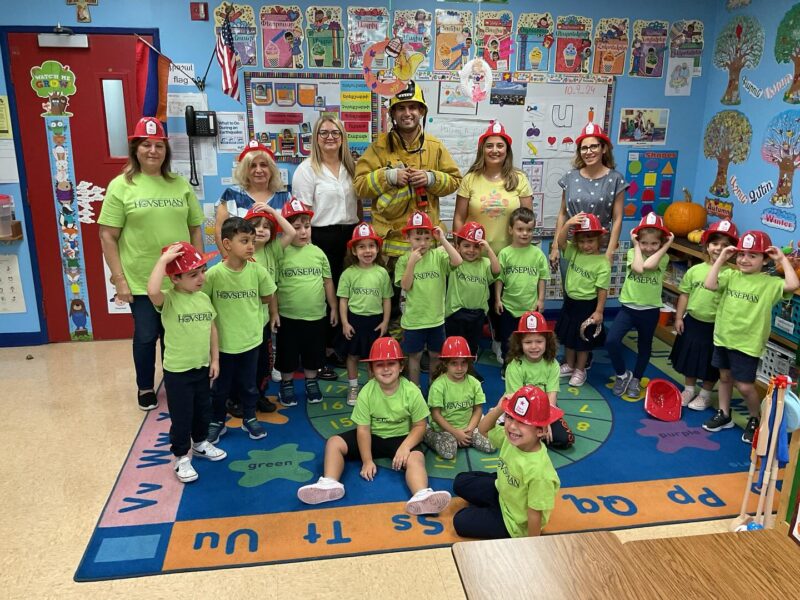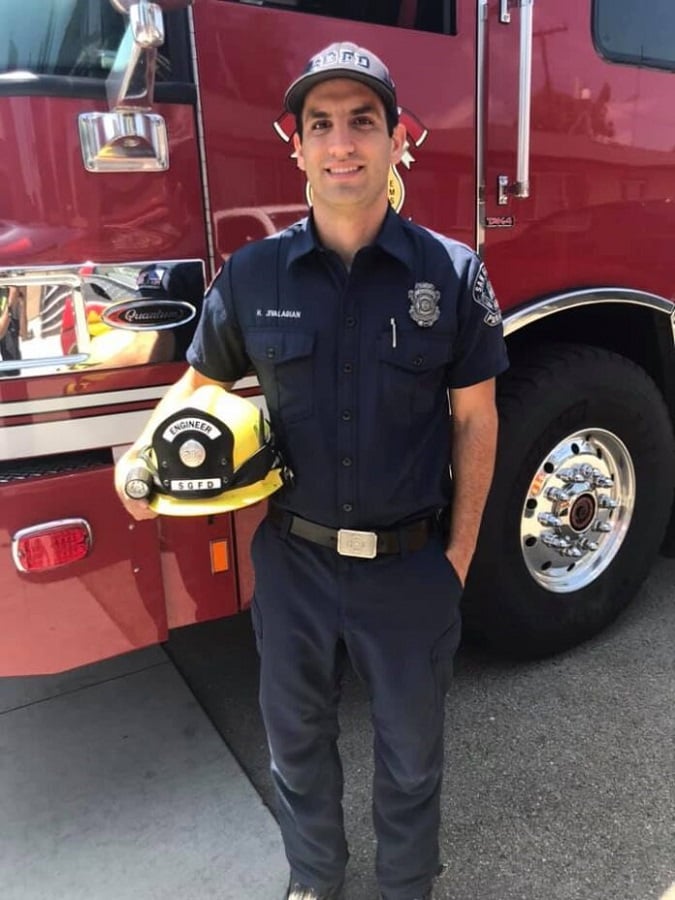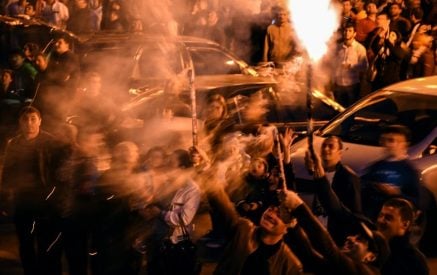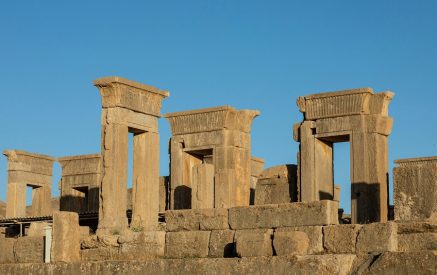by Aram Arkun
WATERTOWN — Armenians are not just among the victims to the fires in southern California. There are also Armenian firefighters who are among the saviors. One of them, 34-year-old Hrag Jivalagian, was working nearly continually in the Altadena-Pasadena areas since the start of what is called the Eaton Valley fires in that area on Tuesday, January 7. (For basic information on the southern California fires, which still remain largely uncontained, see this article.)
Jivalagian lives in Altadena and works in the fire department of the city of San Gabriel, which is two cities to the south of Pasadena. He said: “I was born in the motherland of Glendale and grew up here in Pasadena. I am a local kid.” He went to Pasadena City High School and Sahag-Mesrob Armenian Christian School before starting Pasadena City College. However, he discovered his true vocation through a ride-along with the fire department, which led him to get his Emergency Medical Technician (EMT) license.
Read also

Firefighter Hrag Jivalagian visited St. Gregory A. & M. Hovsepian preschool in October, 2024, to show students safety tips and give them a firsthand look at firefighting gear (courtesy St. Gregory A. & M. Hovsepian School Facebook site)
After two years of college, he went to the Fire Academy for six months of training, and then to paramedic school. He has been working 10 years fulltime as a firefighter-paramedic, and prior to that two years as a paramedic and one year as an EMT.
His main responsibility at present is the fire engine and the equipment, so he makes sure there is water in the pump to be able to provide it at the right pressure. Anything the members of his crew need – usually four people including himself – Jivalagian provides. For example, if one of the crew needs a chainsaw to cut something down, he gets them the chainsaw, which he checks every morning to make sure it works. Once everybody is set at a site and they need backup, Jivalagian said he will back them up on the fire line or the fire hose. If he is not pumping and if there is another fire engine there, he hops off his engine and goes inside or does whatever else is necessary in his support role.
The Eaton Fires
Jivalagian explained that there are 13 cities in his area whose fire departments work together. While he was home in Altadena, an extreme wind event first started on Tuesday and his house lost power. He said, “Usually when we have a significant event, in the fire department, we have a civil duty, but when there is a catastrophic event, we have to show up for work. You make sure that your family is good and then you have to go and help.”
A few other people who lived a little further away came to the station too, and then they collected as much equipment as possible to use their reserve fire engine. Their fire chief said that people are losing homes and the fire is burning, so they should make their way up there. They went first to the NASA Jet Propulsion Laboratory (JPL) in Pasadena and waited for additional resources or firefighters to show up.
Since Jivalagian’s house was not far away, he received permission to check on it. The crew took the fire engine there and found that it was okay. However, a local resident said that there were a few houses burning only several blocks distant, so the crew went with the fire engine to the nearby cul-de-sac and found that while one house was completely gone, another was still savable. Jivalagian said, “Some of the front stuff and part of the house was on fire, so we were trying out best to save it, but while that was happening, the wind event was still happening. So while you’re fighting the fire, there is still ash and smoke and heat blowing on your face, on top of the wind on your face. It was chaotic, especially in the first 12 hours, I would say, because resources are still arriving, or [we are still] waiting for resources. A lot of the resources were at the Pacific Palisades fire.”
Jivalagian said that they worked a few hours more through the night, trying their best. They went back to the station to rest about two hours. Then a new crew came in and he was sent again with them on the fire engine to check on the same house and keep going elsewhere.
The City of San Gabriel was affected a little bit by the high winds, so there were downed power lines, fallen trees, and the residual smoke and ash from the nearby Eaton Valley fires, but it was not directly endangered by the fires. Instead, the two fire stations were able to help their neighbors to the north.
He said that while usually there is a chain of command and teams are put together to fight fires, in this case, as there was so much going on at the same time and limited resources, “what we were doing was going to the known locations [of fires in the Altadena/Pasadena region]. Wherever you would see a flareup or a plume of smoke, we would go and try to save whatever we could – whatever houses were still standing.”
Fortunately, most of the people living in these locations had already evacuated, and his crew did not have to extricate people from burning houses, but he did hear on the radio of a few such instances where people had refused to leave their homes and became burn victims.
Jivalagian worked continually from Tuesday night until Sunday morning, January 12, with minimal breaks in between when possible. He said he thought there might be a few more flareups forthcoming in the Altadena-Pasadena area, but that the main damage to homes and buildings had already taken place and the fire would move forward, depending on wind directions.
There are two types of firefighting, Jivalagian said: wildland and city. His own specialization is the latter, as he works for a city, and the type of fire engine he uses protects city neighborhoods. When the fire spreads to the nearby mountains, it will no longer be in his territory but in that of the wildland firefighters, who have specialized fire engines that look more like pickup trucks. The latter go up in the mountains to do what is called cutting lines, which, he explained, was to try to cut vegetation and eliminate potential fuel for spreading fires.
What will be left for the city firefighters will be working on the recovery phase. Jivalagian said that many houses still have gas lines open with residual gas, so flames are still seen from their gas burning. Jivalagian said on Friday night that unless the winds pick up and the fire goes to another neighborhood, his fire station’s work will probably end. What could cause more difficulties in the same area in the following week or so would be heavy rains that would create mudslides.
Jivalagian said he could not estimate how many homes belonging to Armenians had been destroyed in the Altadena and Pasadena area, but that it is a large number, and he encountered Armenians nearly on every block he went to for work.
One touching incident he recalled was in Altadena on a street where the fire hydrant ran out of water. However, one house his crew was trying to save had a swimming pool, so they worked “old school” and found buckets to fill up and throw at the house. He recalled, “The part that was beautiful was that while we were doing that, we were only four people, but we saw community members run up to us, saying how can we help you… Five guys of the community members picked up buckets and started helping us throw water on…It warmed my heart. It was like wow, that’s beautiful.”


























































